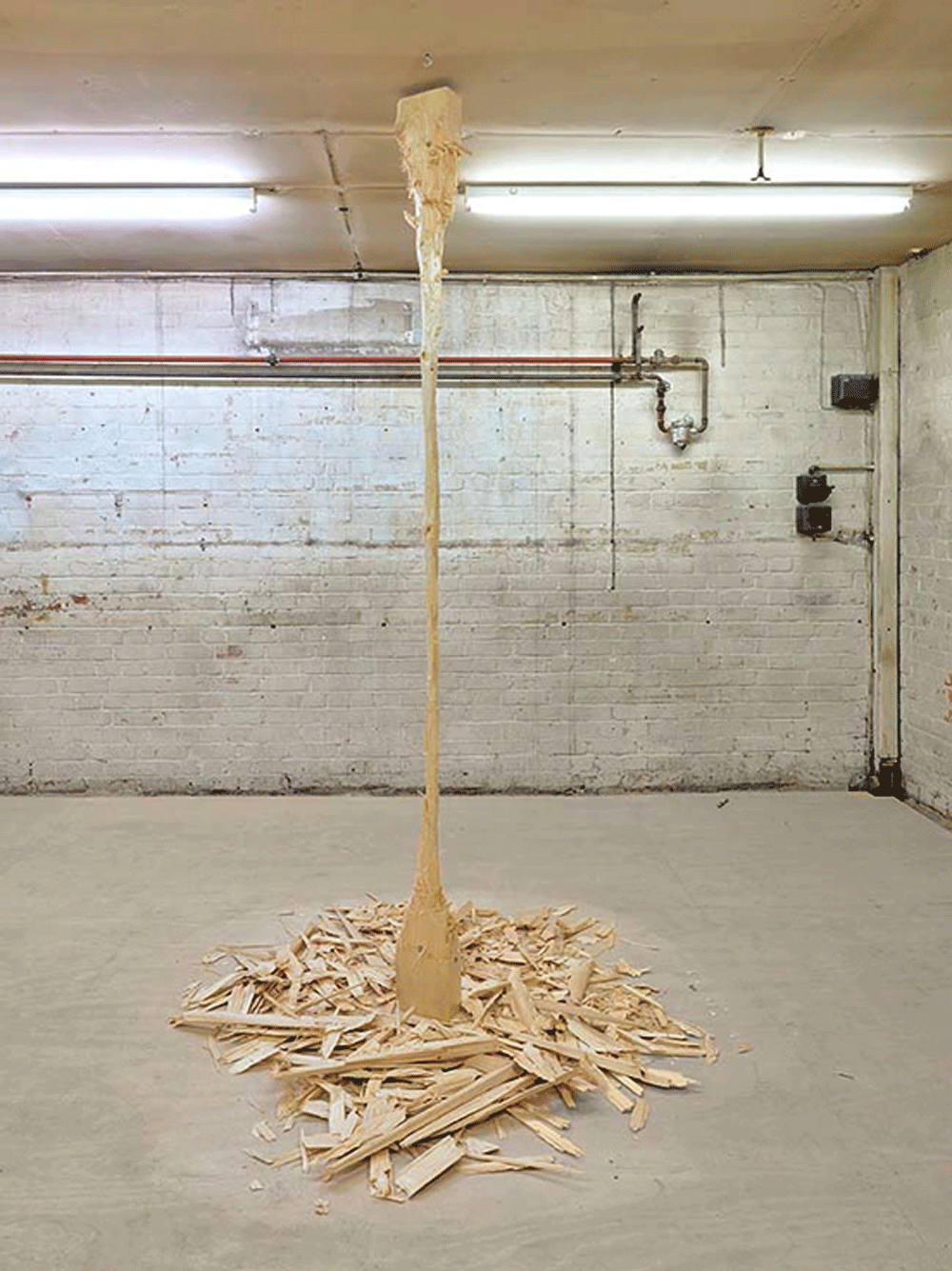David Adamo
Ibid Projects
Ibid Projects

Sculpture can be roughly divided into two categories: it involves either a process of addition or some kind of removal. Most of the works shown in David Adamo’s solo show at Ibid Projects’ new space on Hoxton Square belong to the latter category. The exhibition opened with an axe stuck into a wall, half of its handle lying pathetically on the floor amid a pile of wood chippings (Untitled [axe], all works 2010). An unstrung bow screwed to a corridor wall was reduced to a brittle little line that pointed accusingly at a heap of wood shavings at its base (Untitled [bow]), while, in the back room, the hafts of four oversized sledgehammers resting on their heads were no more than thin sticks (Untitled [Hammers]). Adamo seems to compulsively whittle away any bit of wood he comes across.
At this point, any distinction between ‘addition’ and ‘removal’ starts to disappear and fiction kicks in. Unlike the axe, the gargantuan hammers were clearly fabricated – they were made to be wrecked. Their enormous size suggested the presence of some manic ogre, frantically munching his own implements. Disruption of scale is a textbook trick to induce the fantastic (think of Alice in Wonderland or Gulliver’s Travels); it’s as old as storytelling itself.
The classic fairy-tale lexicon was twisted and tweaked, as Adamo left a trail of clues for us to follow. On the first floor, a bronze cast of a chair’s arced, spiky broken back panel evoked a unicorn’s horn or a diadem lost by some captive princess. These sculptures are often brutal, calling to mind a monstrous force: on the same floor, two crippled wooden beams have something of a pair of victims (Untitled [columns]). But this violence exists only in the realm of child-like imagination, as some bronze M&Ms and the half rubbed-off schoolboy pink and blue eraser standing on a table leg reminded us.
Adamo’s exhibition operated on two levels of fiction: one concerned storytelling; the other was involved with the creative act itself. The shavings at the bottom of all the wooden pieces underscored the making process, while suggesting alternative, fictional processes; they conjured up an image of the artist at work with mallet and chisel whether or not that actually happened (the medium was described as ‘wood and wood chippings’ in the list of works, suggesting that it probably didn’t). Artistic production was turned into a mise-en-scène. The pieces here appeared in-progress; it was almost as if Adamo had just popped out to buy cigarettes halfway through his task. Some may argue that there is something too romantic about his work. They may be right, but for the rest of us, romance, combined with wit and conceptual precision, results in sculpture at its best.
























